You are late for work. You rush into your car, turn the key, and to your horror, hear complete silence. Your baby just refuses to start at all.
You’re lucky if the car cranks slowly instead of failing to start completely, but that day isn’t far away. There is a high chance you have a poor battery or a bad alternator.

If your car is slow to start, troubleshoot immediately. Follow this guide on how to test an alternator in under 10 minutes at home to ensure hassle-free driving.
This article will also cover how to test a car battery with simple tools. Not too well in tune with your car? Here’s an in-depth, easy to understand step-by-step guide on how to test a car battery with a multimeter.
Contents
When do I need to test my car battery and alternator?
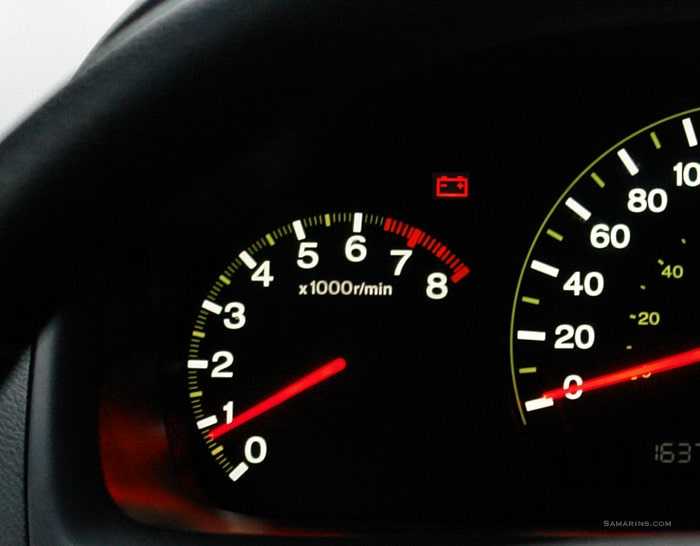
If you’re encountering these problems, chances are your car is having a failing battery or alternator:
- Warning light on dashboard: Typically this light is shaped like a battery, or in some cases denoted “GEN” (for “generator”) or “ALT” (for “alternator”);
- Dim headlights. This is because headlights and other parts that use electricity will not have enough “juice” to function like normal;
- Interior lights: the dashboard gradually dims while the car’s running;
- Some electrical parts do not function well, such as the air conditioning unit.
- A buzzing radio noise through the speakers. This is a signal that the alternator diodes are not in good shape and are leaking energy to the wrong places.
- You hear a squealing sound coming from the front of the car when the engine is running;
- Slow cranking;
- The car doesn’t start at all. Oops.
First you should understand what the battery and alternator in your car do to understand why a weak battery or a failing alternator can cause a variety of problems.
What does a car battery do?
The battery is the vital component that gets your car running. Without it, you’re not going anywhere.
Power to run the car is stored in the battery and is measured in voltage. A battery is fully charged when it holds 12.6 volts or above.
When a battery goes down to 12.2 it is only 50% charged, and when it is below 12 volts the battery is “dead” and needs to be replaced.
What does an alternator do?
The alternator produces electricity from the car’s mechanical energy. It uses this electrical energy to run various electrical parts such as lights, conditioning units, … and to charge the battery.
When you hear someone talking about “charging-system problems”, they are talking about the alternator. If the alternator is working well, the lifespan of your car’s battery is maximized. If it overcharges or undercharge, the battery’s life will be shortened.
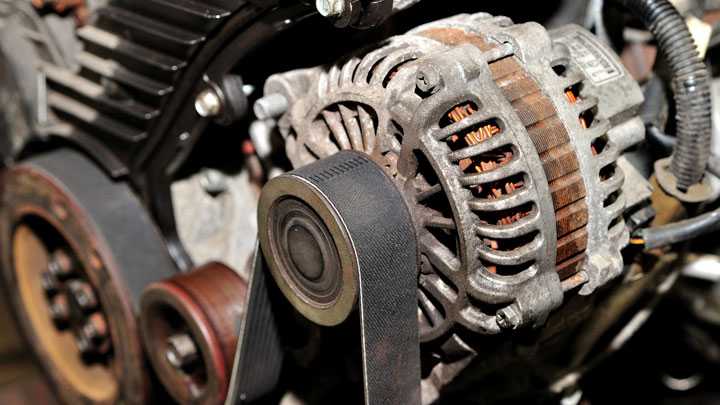
Will a car run with a bad alternator?
Technically the car can still run but only for a short while, since it is strictly only using the power stored in the battery. A bunch of other parts of a car consume power as well: headlights, brake lights, interior lights, engine control unit (ECU) …
So in short, the answer is no. Because a car with weak electrical power doesn’t have enough “food” to feed many necessary components to function in order to get it running.
If this alternator problem manifests on the road, especially during a long drive, your safety goes out the window. You should test the alternator and the battery at regular intervals, say every 4-6 months.
How to test an alternator with a multimeter
A multimeter is a tool that measures a number of different electrical properties, including voltage, current and resistance.
You can use a multimeter to test a car battery as well since it can measure how much voltage your car battery holds, or how fully charged the battery is.
Check the battery first
If slow cranking only happens first thing in the morning, the battery is likely the problem. To test an alternator, you must test the battery first.
This is because the battery gets the car started; when the car runs it spins the alternator and this spinning keeps the battery charged.
If the battery is too weak, it will not get the car running and thus any later test to check the alternator will be useless.
1. Turn the car off for at least one hour
Due to the way the battery discharges, it is important to let the car sit for at least one hour, or overnight, before you use a multimeter to test a car battery.
If the car is running when the battery is tested, the charge from the powered alternator, which is the component that produces electricity and charges the battery, will affect the ‘true’ reading of the multimeter.
If the car has recently been running, the battery is likely to produce a higher misleading number on the multimeter, thus is inaccurate.
2. Prepare the multimeter
Locate the battery, which is often housed in the engine compartment under the hood, to one side of the engine. You have to set the multimeter to a specific range so that it can measure within that range each time you use it to test something.
Set your multimeter to 20 DC voltage, which will let you accurately measure a battery that stores between 0 and 20 volts.
Do this by turning the knob to 20 on the “DCV” (Direct Current Voltage) range. Sometimes this is denoted by the letter “V” with a solid line above a dash line on its right. The multimeter should read 0.00.
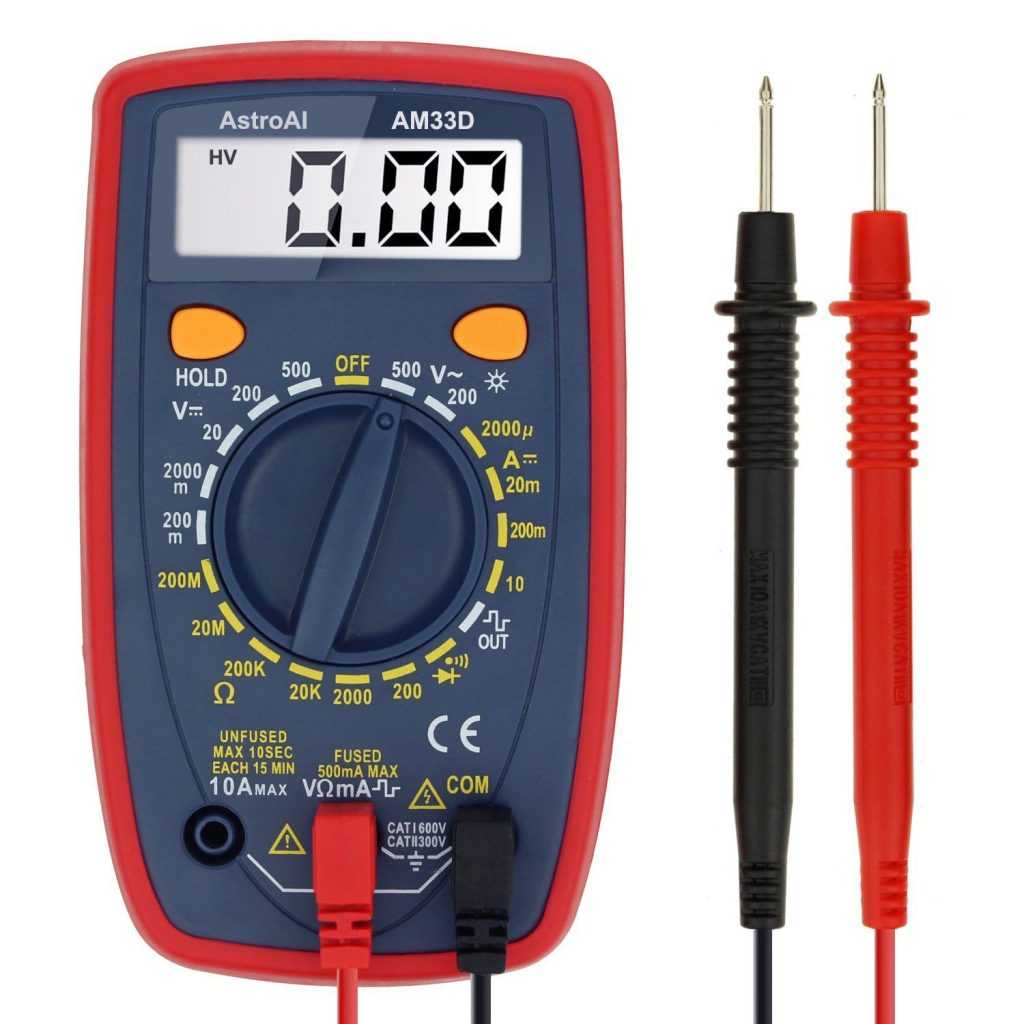
3. Connect the multimeter with the battery and read results
Connect the multimeter with the battery by touching the red (positive, marked “+”) meter probe with the red (positive) battery terminal, and the black (negative, marked “-”) meter probe with the black (negative) battery terminal.
A fully charged battery should have 12.6 volts or above. At 12.2 volts it is only 50% charged and below 12 volts, the battery is “dead” and needs to be replaced.
The battery might need to be charged or replaced before testing the alternator. Then test the battery again with the multimeter.
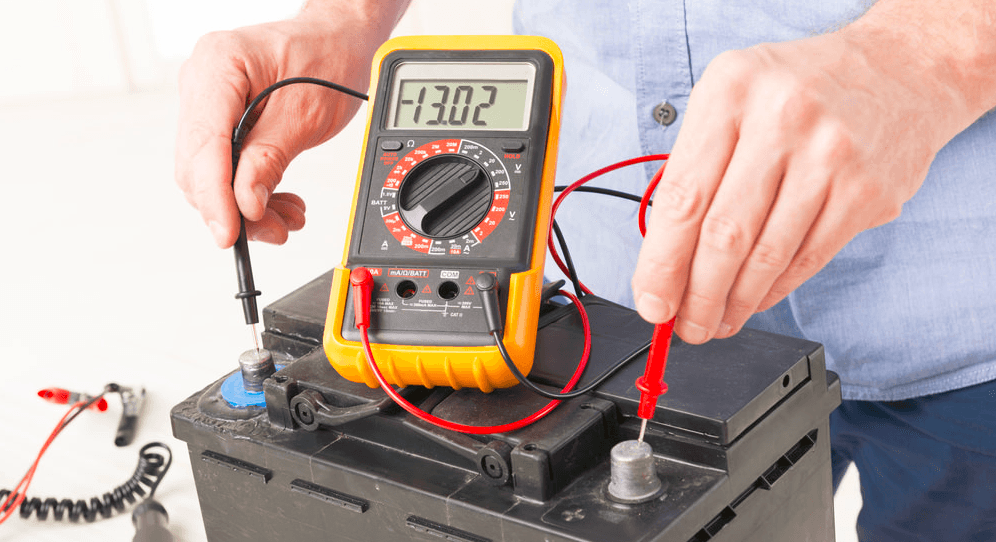
READ MORE:
After the battery test is done, let’s perform the alternator test.
Test the alternator with a multimeter
If the battery is in good shape, and if the slow-starting issue happens when the car has been running, that is when the engine is hot, the alternator might be the culprit.
To test an alternator with a multimeter, leave the engine running, turn off all lights, including the dashboard, and all accessories like the stereo that may be using electricity. Perform the same battery test above with the multimeter.
A healthy alternator should produce between 13.1V and 14.6V at regular idle speed. A reading outside this range means your car’s either undercharged or overcharged, both unhealthy for the battery and your vehicle.
How to test an alternator with a voltmeter
You can buy a voltmeter for less than $15 on Amazon or at any stores selling auto parts.
There are more expensive options but do not worry, the cheaper ones will do everything you need them to just as well. The voltmeter and multimeter are both affordable and handy tools for DIY maintenance.
1. Prepare the voltmeter
Similar to a multimeter, set the voltmeter to“DCV” (Direct Current Voltage). The voltmeter should read 0.00 volt.
Attaching the positive (denoted “+”) and negative (denoted “-”) voltmeter leads to the corresponding positive and negative terminals of the battery.
2. Measure the alternator’s “no-load voltage”
Have an assistant start the engine and keep the engine RPM at about 1500, which is just above idle speed.
This will get the alternator spinning. RPM stands for revolutions per minute and measures the speed at which the engine turns.
Keep the engine running for a while, while turning off all accessories that might be using electricity.
This time the battery should return a reading higher than before when the engine is off, by 0.5 to 2.0 volts. That is if your battery is fully charged, it should now read between 13.1 and 14.6 volts.
If the voltage drops or doesn’t change when the engine is running, your alternator is not charging the battery properly.
If it increases by more than 2.0 volts, the alternator is overcharging the battery. If it increases by less than 0.5 volts, the alternator is undercharging.
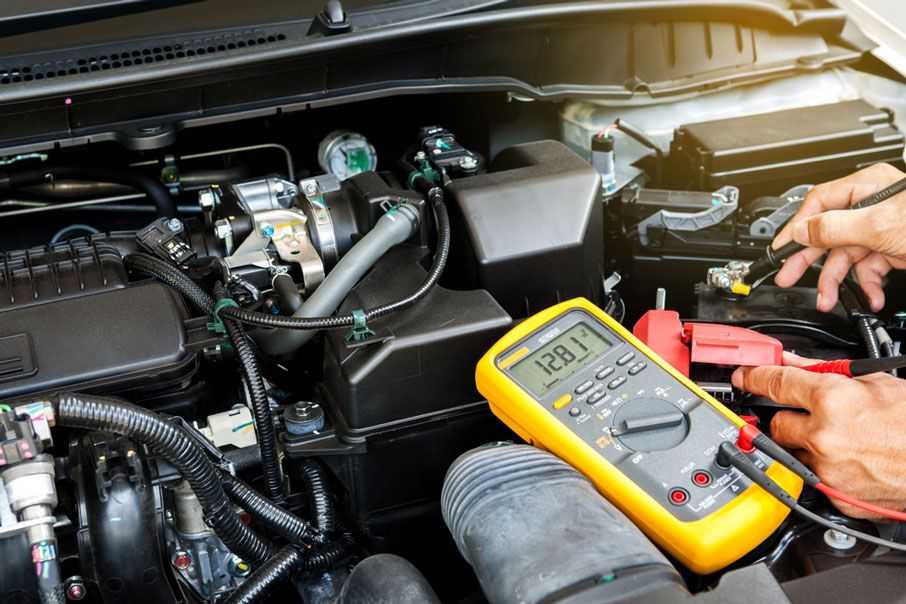
3. Measure the alternator’s “load voltage”
Now it’s time to test the alternator to see if it will function properly under heavy usage.
Let your assistant keep the engine running at a speed of 2000 RPM. Turn on all accessories, including headlights, interior lights, radio, wipers … and reconnect the voltmeter.
If it reads 13.0 volts and above, the alternator is strong enough. Anything lower than 13.0 signals a faulty alternator.
What else can be wrong if a car doesn’t start?
If it’s not the battery or the alternator, the two most likely reasons, the problem might lies with the car’s starter. Refer to these easy tricks to troubleshoot and deal with a bad starter.
READ MORE:
If your car is slow to start or doesn’t start at all, check your car battery and alternator as these are most likely the culprit.
Better yet, do not leave it until you encounter slow-starting or no-start: you must inspect these two critical parts regularly, or you may find yourself late for work, or in the middle of the road.
It is important to pay attention to what your car is trying to tell you. Any strange symptoms are likely pointing to a malfunction somewhere and needs to be addressed immediately.
Do not leave it until it’s too late. Visit our comprehensive guides and tips on easy DIY maintenance to ensure your baby gets the proper care it deserves.



